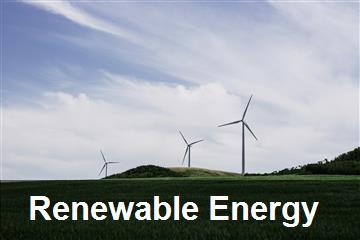
04 ott 2024
Renewable Energy Communities (RECs) in Italy are guided by national legislation, which allows flexibility in choosing a legal form, provided it is a private legal entity without profit motives.
The choice of legal structure, such as associations, cooperatives, or participation foundations, impacts the community's ability to deliver environmental, economic, and social benefits.
While cooperatives offer democratic participation and potential tax benefits, associations are cost-effective for smaller projects.
Participation foundations, though less common, are suitable for managing significant assets.
The debate continues on the best models for RECs, considering their unique needs and potential limitations.

Introduction to Renewable Energy Communities
Renewable Energy Communities (RECs) in Italy are shaped by the national legislative framework, particularly Article 31 of Legislative Decree 199/2021. This legislation outlines the essential characteristics of a REC, emphasizing that it must be a private legal entity with no profit motive, open and voluntary membership, and a focus on delivering environmental and social benefits. This legal flexibility allows those interested in forming a REC to choose the most suitable legal structure based on factors such as the size of the installation or the stakeholders involved. However, it is crucial to maintain the distinctive features that define a REC, making certain corporate forms incompatible with the concept of an energy community.Prohibition on Profit Distribution
A key aspect of RECs is their obligation to provide environmental, economic, or social benefits rather than distributing profits to members. Consequently, legal forms like joint-stock companies (Spa) or limited liability companies (Srl), and other corporate forms, except cooperatives, are not suitable for recognition as energy communities. In contrast, associations and cooperatives are more aligned with the principles of RECs. Associations offer a structure that supports open membership and aligns with the goals of a REC, while also being cost-effective for smaller installations. Cooperatives, on the other hand, may be the most adaptable form for establishing a large-scale energy community, especially when initiated by a public entity.The Cooperative Option
Cooperatives provide a framework for active and democratic participation of members in decision-making processes, financial commitments, and profit allocation. They offer a flexible capital structure that supports open membership, allowing new members to join and contribute to the community's operations. This form is often representative of the local area, as evidenced by European data showing widespread use of cooperatives in countries where RECs have flourished. Additionally, the Third Sector reform allows cooperatives to qualify as social enterprises, granting specific tax benefits such as profit tax exemptions (Article 18, Legislative Decree 112/2017).Participation Foundations
Another potential legal structure for RECs is the participation foundation. This form is characterized by multiple founders or participants, active involvement in management, and the progressive formation of assets beyond the initial endowment. Although less common in the REC landscape, participation foundations can be a viable choice for managing significant assets dedicated to energy production, while ensuring community involvement in management. The ability to establish RECs in various legal forms and to qualify as a third sector entity, due to the recognition of energy production and sharing as activities of general interest, fuels the ongoing debate about the analysis of each REC model, the comparison of possible models, and the advantages and limitations based on the needs to be met.Further Exploration of the Topic
- Understanding the impact of legal structures on the effectiveness of RECs.
- Comparing international approaches to REC formation and management.
- Evaluating the role of government policies in supporting RECs.
Potential Opportunities
- Enhanced community engagement and empowerment through democratic participation.
- Access to tax benefits and incentives for social enterprises.
- Development of sustainable energy solutions tailored to local needs.
Critical Aspects and Potential Issues
- Balancing the need for financial sustainability with non-profit objectives.
- Navigating complex legal and regulatory frameworks.
- Ensuring equitable participation and benefit distribution among members.
Common Pitfalls and Typical Errors
- Choosing an inappropriate legal structure that limits REC functionality.
- Underestimating the importance of community involvement and support.
- Failing to comply with legal and regulatory requirements.
Suggestions and Useful Guidelines
- Carefully assess the legal structure that best aligns with the REC's goals and scale.
- Foster transparent and inclusive decision-making processes.
- Stay informed about legal changes and opportunities for tax benefits.
